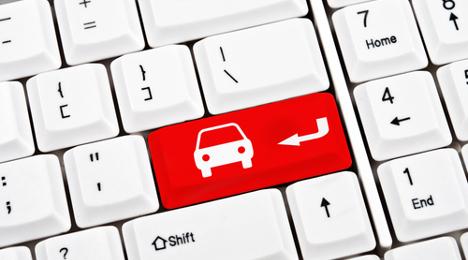Price impact of moving no-sales to OVE

By subscribing, you agree to receive communications from Auto Remarketing and our partners in accordance with our Privacy Policy. We may share your information with select partners and sponsors who may contact you about their products and services. You may unsubscribe at any time.
ATLANTA –
Say you’re a consignor and you have run a vehicle through the auction lane, and it doesn’t sell.
According to a new white paper released today by Manheim, if you post that no-sale car on the company’s OVE platform instead of re-running it through the auction lane, it is likely to generate a higher percentage of the MMR price.
Not only that, it is likely to take fewer days to sell. The findings of the report — titled “Increase Auction Values up to 3 percent by Listing ‘No-Sales’ on OVE” — were compiled based on an analysis of the top 15 commercial fleet/bank national consignors who post only no-sale vehicles on OVE (meaning they don't put fresh vehicles on that site).
The study’s time frame was January through June, included only Manheim’s U.S. sales and excluded TRA/salvage and specialty sales.
Manheim came away with four key findings from conducting this research.
First, the aforementioned increase in percentage of MMR for vehicles that are re-run through OVE instead of the physical auction.
Subscribe to Auto Remarketing to stay informed and stay ahead.
By subscribing, you agree to receive communications from Auto Remarketing and our partners in accordance with our Privacy Policy. We may share your information with select partners and sponsors who may contact you about their products and services. You may unsubscribe at any time.
And as the vehicle grade on the car goes up, so does that percent of MMR gain.
In other words, as the vehicle grade goes up, so does the gap in percent in MMR between vehicles re-run in the auction lane and vehicles re-run on OVE.
“The lift attained from selling a ‘no-sale’ on OVE ranges from $144 for grade 2 vehicles up to (approximately) $396 for the highest grades,” the paper states.
As for the third finding, Manheim noted that no-sale vehicles listed on OVE immediately sell an average of four days quicker than those re-run in the physical lane a week later.
Lastly, the study points out that greater reach that sellers can have via OVE. It notes that just under a fifth (18.6 percent) of buyers only conduct vehicle purchases online and that more than a third (35.7 percent) of OVE buyers bought a car that was more than 500 miles from them.
Less than a tenth (7.7 percent) of physical lane buyers did the same when it came to traveling and transporting.
Auto Remarketing talked with Jenifer Eggert, vice president of digital services at Manheim, to get some more insight on the study. She emphasized that they’re not suggesting that all vehicles should go in-lane before going online or vice versa.
“There’s just a category of cars that perform better online versus in-lane, either from the get-go or vice versa. So it’s really up to the consignor to know what works best for them, and we help them as much as we can. That’s what the consulting arm of Manheim helps them with,” Eggert said.
The point is to be educated, she added, and understand which will generate the most money on the sale and the greatest efficiency.


